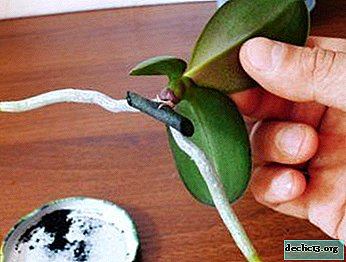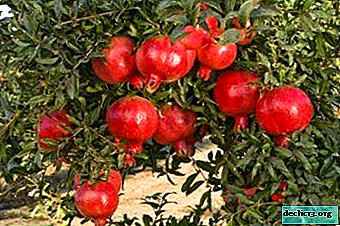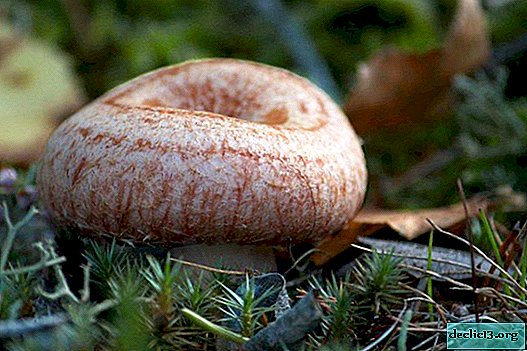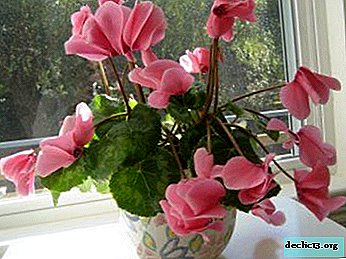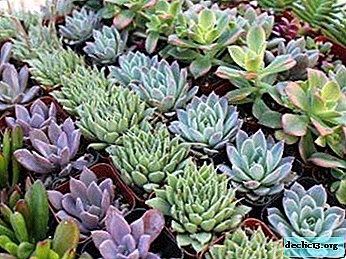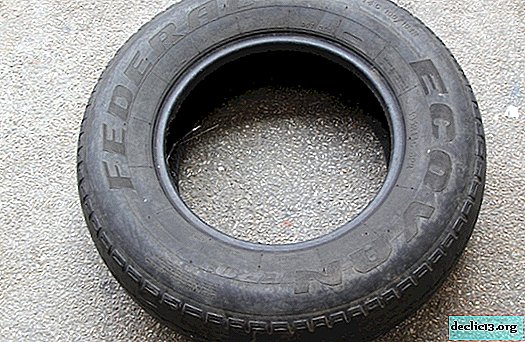All about the magnificent flowering Succulent Mammillaria Seilman
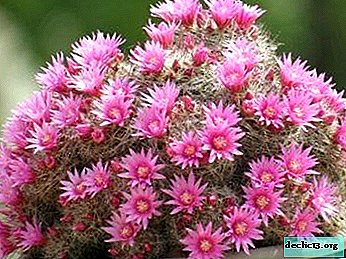
Florists are sensitive to cacti because of their species diversity and unpretentiousness. Mammillaria is a very popular succulent for home maintenance, known for abundant and prolonged flowering. A characteristic feature of mammillaria, which gave the name to the species, are tubercles (or papillae, in Latin "mammilla"), covering the entire surface of the trunk. Seilman's Mammillaria blooms for up to six months, which attracts gardeners aimed at breeding cacti for their decorative value. The species is prone to easy breeding and easy to care for.
Botanical Description
Seilman's Mammillaria (also called Celman Lat. "Mammillaria zeilmanniana") is a miniature cactus with a light green cylindrical stem. On the sides of the trunk, many shoots are formed. The cactus is densely covered with short, bent needles, between which light long villi grow. Seilman differs from other types of mammillaria with tubular flowers of pink and purple tones, which are located around the circumference of the trunk, resembling a wreath.
In height, an adult cactus can reach 10 cm, in girth - 6 cm. A special feature of Seilman's mammillaria is a long flowering period - up to 6 months. The species tolerates low temperatures (up to -7 C). Waterlogging of the soil is destructive for Seilman - the soft structure of the stem lends itself to decay.
Maintenance and care of Mammillaria Celman (Celman)
 The vast majority of mammals are distinguished by their unpretentiousness. By following the simple principles of succulent care, you can achieve its optimal growth and development..
The vast majority of mammals are distinguished by their unpretentiousness. By following the simple principles of succulent care, you can achieve its optimal growth and development..
- The temperature in the summer is kept at 20-23 C. The cactus needs periodic ventilation - for this purpose the pot with mammillaria is taken out onto the street, balcony or window sill with an open window. During dormancy (in winter), Seilman is placed in a cool, shaded place, the air temperature should not exceed 12 - 15 C. Do not worry about this frost-resistant look - it tolerates cold well to - 7 C.
- Seilman's mammillaria does not tolerate excess moisture in the soil, the rhizome and soft tissue of the stem instantly decay from overmoistening. Most often, the plant is watered in spring and summer: 1 time per week. During the dormant period, 1 time per month is sufficient, in the fall - 1 time per 2 weeks. In the warm season, irrigation of a cactus from a spray bottle is not superfluous.
- Bright lighting is not required for the mind; a window sill from the west or east side will be a good option for placing a pot with Seilman.Reference! To avoid direct sunlight, a container with a plant is placed near the window, or use curtains to shade the space.
- The soil mixture for planting mammillaria can be prepared independently, in equal proportions mixed: peat, turf and leafy soil, adding a layer of coarse sand and brick chips to the bottom as drainage. And you can also buy in a specialized store a balanced soil for succulents.
- Adult specimens with numerous lateral shoots, as well as having lost their decorative appearance and too overgrown, need periodic pruning:
- With a sharp, clean knife, with the sharp and precise movement, cut off the top of the cactus (4-5 cm). For the convenience of pruning, the cactus can be temporarily removed from the ground.
- Cut edges are cut with a knife. The incision site will dry out, and soft tissue will be taken into the main substance of the stem. If the edge is not formed, then as it dries, the cut will turn into a deformed funnel.
- The cut off part is also planed with a blade and placed in an individual pot with a small amount of water. A few months later, after the shoots appear at the site of the cut, the future cactus is placed in the sand, after having laid the drainage layer on the bottom of the container. Watering is recommended not earlier than after 7 days.
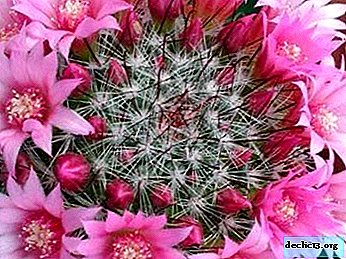 Fertilize the plant with balanced means for feeding succulents, containing various trace elements: potassium, phosphorus, magnesium, iron and others. Top dressing gives the best effect in spring and autumn. In winter, the plant is not disturbed and does not make any fertilizer.
Fertilize the plant with balanced means for feeding succulents, containing various trace elements: potassium, phosphorus, magnesium, iron and others. Top dressing gives the best effect in spring and autumn. In winter, the plant is not disturbed and does not make any fertilizer.- The capacity for planting Seilman's mammillaria is selected on the basis that the root system of the cactus is not very developed, however, the group of shoots will need relatively much space for productive coexistence. Shallow and wide pots will be the most suitable option.
- The transplant is performed exclusively in the spring, at the end of the dormant period. The cactus gently moves into a larger pot with well-selected soil, rich in minerals, and a good layer of drainage. Loose soil is preferred for good air and water permeability. After transplanting, watering is carried out at least a week later.
- During the dormant period (in winter), it is not recommended to transfer the plant from place to place, water it abundantly or transplant it. Succulents are provided with a cool shaded place and left until spring, moistening once a month with a small amount of water.
Breeding
Seilman Mammillaria is propagated in several ways.: sowing seeds or rooting of lateral processes.
- An effective and simple method is the separation of lateral shoots (children) from the mother plant.
- Within a few days, the cut off part is dried.
- Then planted in a small pot filled with special soil and coarse river sand.
The first watering is done at least a week later. A young plant is transplanted every year, as a group of cacti grows. A significant disadvantage of the method is the fact that repeated separation of shoots can adversely affect the development and flowering of the mother plant.
- For a method that does not harm an existing colony of cacti, plant seeds are used.
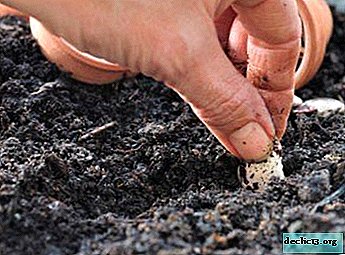 Mammilaria seeds are sown on a mixture of turf and coarse sand and sprinkled on top with a small amount of substrate.
Mammilaria seeds are sown on a mixture of turf and coarse sand and sprinkled on top with a small amount of substrate.- Watering a small amount of water, the container is cleaned in a shaded place, providing an air temperature of about 20-25 C.
- After the appearance of the first shoots, pots with young cacti are rearranged in a place provided with constant lighting. This will allow them to quickly adapt to the environment and create the conditions for regular and prolonged flowering.
We suggest you watch a video about the propagation of succulent seeds:
Diseases and Pests
Seilman Mammillaria may be affected by the following negative factors:
- Excess moisture causes decay of the roots and stems of the cactus. Damaged parts are removed immediately.
- Lack of lighting will provoke the growth of trunks in height towards the light source and spoil its decorative appearance.
- The red tick is the most dangerous insect for mammillaria. It eats vital plant juices, and waste products are able to provoke rotting parts of the cactus. To eliminate it, the plant is sprayed with a solution of the corresponding substance.
Similar plants
Seilman's mammals are similar in some properties, characteristics and appearance: prickly pear, fat girl, stonecrop and echinopsis (a fleshy stem that retains moisture reserves), adromicus (the formation of a group of cacti due to the formation of lateral processes) are related species.
Mammillaria provides a wide selection of easy-to-care plants for home breeding. Simple maintenance rules and a high flowering time make Seilman's mammillaria a particularly sought-after species among beginner and enthusiastic succulent lovers.

 Fertilize the plant with balanced means for feeding succulents, containing various trace elements: potassium, phosphorus, magnesium, iron and others. Top dressing gives the best effect in spring and autumn. In winter, the plant is not disturbed and does not make any fertilizer.
Fertilize the plant with balanced means for feeding succulents, containing various trace elements: potassium, phosphorus, magnesium, iron and others. Top dressing gives the best effect in spring and autumn. In winter, the plant is not disturbed and does not make any fertilizer. Mammilaria seeds are sown on a mixture of turf and coarse sand and sprinkled on top with a small amount of substrate.
Mammilaria seeds are sown on a mixture of turf and coarse sand and sprinkled on top with a small amount of substrate.